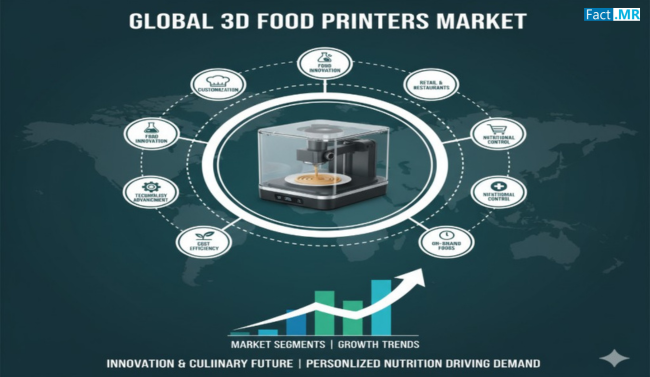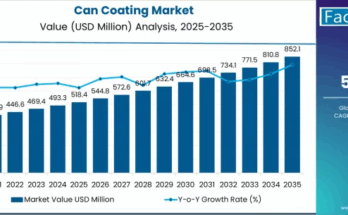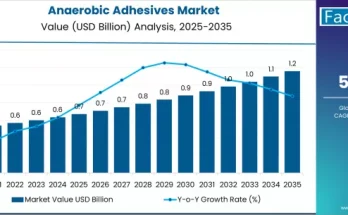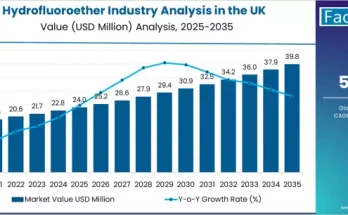The 3D food printer market is emerging as a transformative segment in the food and beverage industry, offering novel ways to produce customized and intricately designed food products. As consumer preferences shift toward innovation, personalization, and sustainable practices, 3D food printing is gaining momentum globally. This technology leverages additive manufacturing principles to layer edible materials, enabling the creation of visually appealing and nutritionally balanced food items.
Market Overview:
3D food printers are designed to handle a range of edible materials such as chocolates, pastes, purees, and mashed potatoes. They employ various technologies, including extrusion-based printing, selective laser sintering, and binder jetting, to craft foods with precision and creativity. The technology is increasingly adopted by restaurants, bakeries, confectioneries, and large-scale food manufacturers aiming to enhance presentation, streamline production, and meet modern consumer demands.
Regional Insights:
North America currently leads the adoption of 3D food printers, driven by a high degree of technological integration, a strong focus on innovation, and consumer demand for personalized food experiences. Europe follows closely, with sustainability initiatives and regulatory frameworks encouraging the use of advanced manufacturing solutions in food production. Asia-Pacific is emerging as a significant player, with countries like China investing heavily in 3D food printing technology to cater to a growing middle class, evolving culinary traditions, and heightened awareness of food safety and nutrition.
Key Trends & Forecast:
- Customization and Personalization:One of the strongest drivers of growth in the 3D food printer market is the ability to create highly personalized food items. Consumers increasingly seek foods tailored to their nutritional preferences, aesthetic desires, and dietary requirements, making 3D printing an attractive solution.
- Sustainability and Waste Reduction:Traditional food production often results in significant waste. 3D food printers allow on-demand production, reducing excess inventory and minimizing food waste. Additionally, manufacturers are exploring eco-friendly materials and innovative designs to further enhance sustainability.
- Innovation in Confectionery and Chocolates:The rising popularity of chocolates and confectionery products has created opportunities for intricate designs and custom shapes using 3D printers. This segment continues to capture a notable market share due to demand for unique and artistic creations.
- Integration of Smart Technologies:Advances in software and automation are enabling printers to incorporate sensors, AI-based designs, and quality control systems. This trend enhances accuracy, efficiency, and consistency in food production, further fueling adoption across commercial kitchens and industrial food manufacturers.
Applications & End-Use Outlook:
The applications of 3D food printers span multiple domains:
- Restaurants and Hospitality:Chefs leverage 3D printing to create bespoke dishes, enhance visual appeal, and provide unique dining experiences.
- Confectionery and Bakery:Custom chocolates, cakes, and intricate desserts can be produced quickly and efficiently, meeting the growing demand for artisanal and premium products.
- Healthcare and Nutrition:Customized nutrient-rich meals for patients, elderly care, and specialized diets are becoming more feasible with 3D printing technology.
- Food Manufacturing:Large-scale production benefits from automation, precision, and the ability to create complex shapes that are otherwise challenging with traditional methods.
Opportunities in Emerging Markets:
Manufacturers are actively exploring untapped regions to expand market reach. Emerging economies provide opportunities to introduce innovative food solutions, cater to diverse cultural tastes, and establish manufacturing and distribution networks. These expansions also create local employment opportunities and support community development.
Challenges & Market Restraints:
While the 3D food printer market shows strong growth potential, certain challenges persist:
- Limited Production Capacity:Current technology may not always meet the high-volume demands of large-scale manufacturers, posing a challenge to mass adoption.
- Regulatory Compliance:Food safety and quality regulations are evolving, and manufacturers must ensure compliance with strict standards, which can increase operational complexity and costs.
- Technological Learning Curve:Integrating 3D food printers into existing kitchens and production lines requires technical expertise and training, which can slow adoption in traditional setups.
Conclusion:
The 3D food printer market represents a convergence of culinary innovation, sustainability, and technological advancement. By enabling the creation of personalized, visually stunning, and nutritionally balanced food products, it addresses evolving consumer preferences while reducing waste and enhancing efficiency. As the technology continues to mature, supported by research and development, the market is poised for substantial growth across both developed and emerging regions. Organizations and food manufacturers that strategically invest in 3D food printing stand to gain a competitive advantage by offering unique experiences, operational efficiency, and sustainable solutions to the modern consumer.



